Complete Guide to Fort Scott National Historic Site in Kansas, including things to do, history, US Army Post, hours, directions, and so much more.
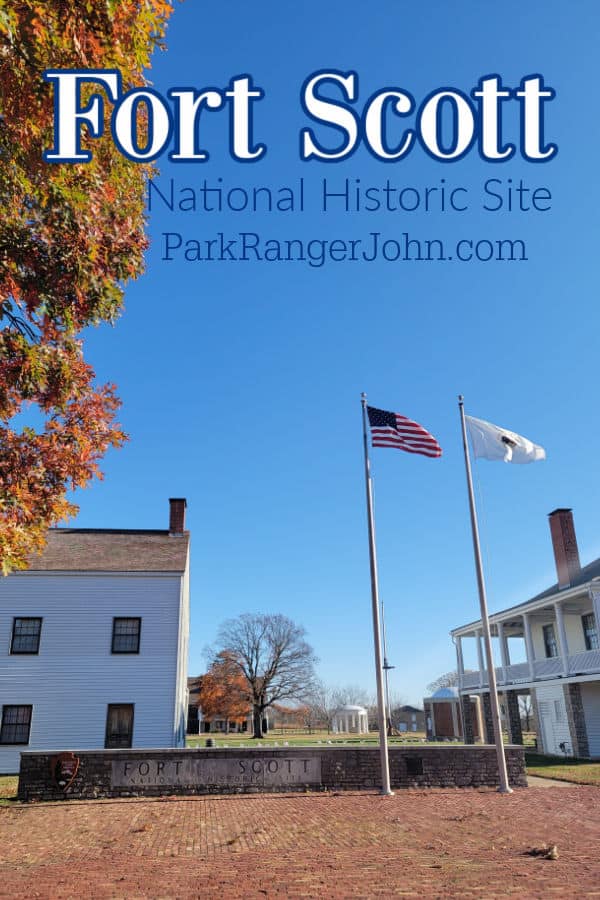
Fort Scott National Historic Site
Fort Scott National Historic Site is located in eastern Kansas. The park protects a US Army Post that was the center of Western expansion.
About Fort Scott National Historic Site
Fort Scott was established in 1842 during the time when many Native American tribes were being relocated from their lands (Trail of Tears). The fort was built to prevent conflict between Native tribes and white settlers.
Soldiers from the fort protected immigrants headed west on the Sante Fe and other trails.
Fort Scott never came under attack while it was used as a US Army Post. The fort was abandoned in 1853.
During the Civil War, the fort went back to being a military holding with the Union Army occupying multiple buildings starting in 1861.
During the Civil War, the U.S. Army fort served as a vital supply depot for Union forces along with being a military hospital and a prison.
It was once again abandoned in 1865 only to return to service again in 1870 when soldiers were assigned to protect railroad workers laying track in the region.
This was one of the few times in US history when the US Army used its weapons against American citizens.
The fort was again abandoned in 1873.
Visitors today can tour the grounds and see 11 historic structures that are considered original including the hospital, officer's quarters, quartermaster's storehouse, bakehouse, and carriage houses. The buildings surround the parade grounds.
It is a fairly easy walk around the parade grounds to see each of the historic buildings. There are stairs to go into some of the buildings.
A few areas had uneven rock pathways that may be difficult if you have any knee problems. These areas were small and easy to move around.
Make sure to prepare for the sun, wind, and weather. There is no real shade while walking the parade grounds. It was super windy the morning we visited the park and it was chilly!
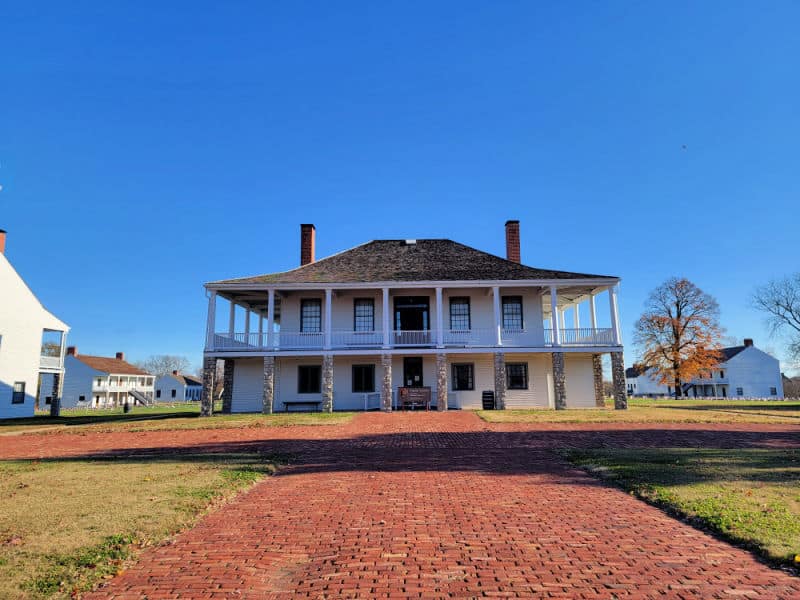
Is Fort Scott National Historic Site worth visiting?
It is a must-visit destination for history enthusiasts and anyone interested in learning about the military and the Westward Expansion of the United States.
History of Fort Scott National Historic Site
Fort Scott National Historic Site preserves the history of a nation growing up. Fort Scott was built in 1842, forming part of the Frontier Line.
The Frontier Line was a line of frontier fortifications that stretched from Minnesota to Louisiana. The purpose of these forts was to protect the settlers arriving in the west from the Native Nations tribes and vice versa.
Fort Scott witnessed the westward expansion, a turbulent period known as Bleeding Kansas, and the American Civil War.
The National Park Service protects 20 buildings that made up Fort Scott and five acres of tall prairie grass, giving us an insight into both life on the Frontier, and the politics of a nation.
The Building of Fort Scott
In 1830, President Andrew Jackson signed the Indian Removal Act, which gave American settlers the right to expand westward. The act gave the U.S government the right to remove Native Nations tribes from their homelands and resettle them in the newly created Indian Territory in Oklahoma.
American settlers believed in ‘manifest density’ which was the belief that the expansion of American settlers throughout the territories was both inevitable and a divine right.
In the 1840s, hundreds of thousands of settlers traveled west, following gold and the promise of new and fertile land to farm.
The various treaties between the Native Nation tribes and the U.S government stated that the government would offer the Native Nations protection. This promise, along with the concerns the white settlers had in the area, led to the construction of a line of fortifications along the frontier line.
Fort Scott was built in 1842 and established to be a permanent military presence on the Frontier. Soldiers from Fort Scott provided military escorts to travelers along the Oregon and Santa Fe Trails. The Dragoons from Fort Scott were part of many expeditions along the trails from 1844, when traffic along the trails, especially the Oregon Trail, increased dramatically.
The Dragoons from Fort Scott not only protected travelers along the Oregon Trail but kept the peace between the Pawnee and Sioux Native Nations tribes in the area. The Dragoons put on a display of power using howitzers at both the Pawnee and Sioux camps.
Soldiers from Fort Scott protected not just the migrant trails but the American nation during the Mexican-American War in 1846. Many soldiers that had been stationed at the fort, were sent to fight in Mexico during the conflict.
Fort Scott and Bleeding Kansas
Before the onset of the American Civil War, tensions surrounding slavery were steadily increasing. As the American nation expanded, the question of whether these new territories should be allowed to possess slaves was the topic of much debate and conflict.
In 1854, the Territories of Nebraska and Kansas were created. With the creation of the new territories came the Kansas-Nebraska Act.
This act stated that, the settlers were to decide whether slavery should be allowed or banned in the new territories. The settlers were to vote on the matter. Settlers on both sides flocked to the new territories, in an attempt to influence the vote.
There were three political groups in Kansas; those that supported slavery, the abolitionists, and the free-staters. The free-staters were a group who felt slavery should not be allowed in the new territories but did not oppose slavery. Violence soon erupted between the three groups.
The period of prolonged violence between the various political groups in the Kansas territory is known as Bleeding Kansas. In 1855, the structures that made up Fort Scott were sold at auction. A new town, Fort Scott, stood in place of a military outpost. In Fort Scott, the divide was evident.
Two hotels were opened in Fort Scott. One for those who aligned with the ideals of the free-staters, called the Free State Hotel, and one in what was the soldier's barracks, called the Western Hotel. The Western Hotel was for those who supported slavery. Violence broke out between the two sides, with the free-staters attempting to burn down the Western Hotel.
During this turbulent time, the U.S Army was present at Fort Scott once more to keep the peace. In 1861, America descended into Civil War.
Fort Scott and the American Civil War
In 1861, the tensions regarding slavery reached a breaking point. The southern states began to break away from the Union to form the Confederate States of America. The U.S. military once again occupied Fort Scott.
The Union army used the old forts barracks, stables, and hospital. They began building new structures to house a powder magazine, blacksmiths, a prison, and miles of fortifications surrounding the town.
Fort Scott became a vital supply depot during the war and supplied all the soldiers within a 40-mile radius. Fort Scott became a haven for refugees fleeing the war and is where the first regiment of African American troops to fight the Confederates joined the military.
Fort Scott remained in Union control throughout the war, despite several attempts by the Confederates to take the strategic fortification.
Fort Scott and the Transcontinental Railroad
In 1868, the first railroad reached Fort Scott. The railroad brought with it renewed conflict in the area surrounding Fort Scott. The railroad was to cut through the land known as the Cherokee Neutral Lands, which was an unsettled buffer between the Osage tribal lands and Missouri.
The Cherokee sold the land to the U.S government in 1866, and settlers quickly moved into the area to settle in the buffer zone. In 1868, the railroad bought much of the Neutral Lands. However, the people who had settled illegally on the land refused to move.
Violence between the railroad workers and the settlers broke out. The military was sent once again to Fort Scott to put an end to the violence. In 1873 the issues with the railroad came to an end, and with it, the U.S occupation of Fort Scott.
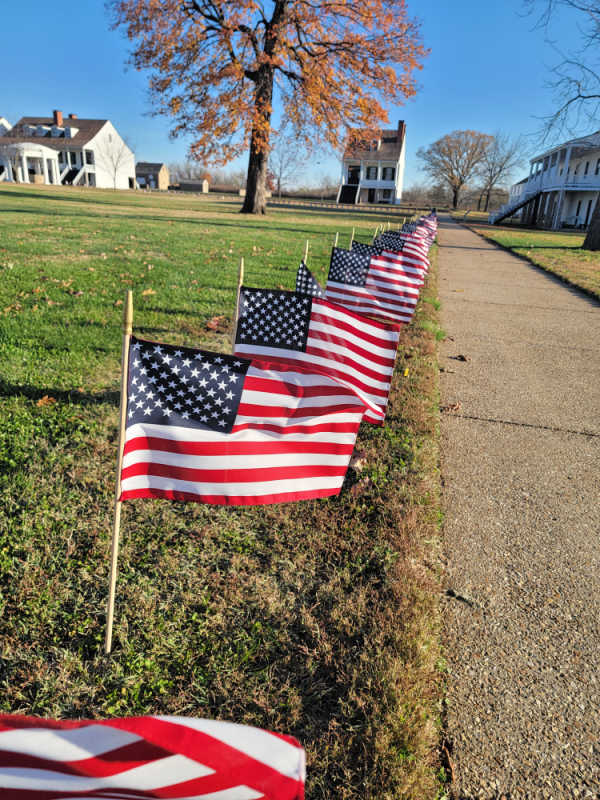
Things to know before your visit to Fort Scott National Historic Site
Entrance fee
$0.00, There is no fee to visit the park.
Learn more about National Park Passes for parks that have an entrance fee.
$80.00 - For the America the Beautiful/National Park Pass. The pass covers entrance fees to all US National Park Sites and over 2,000 Federal Recreation Fee Sites for an entire year and covers everyone in the car for per-vehicle sites and up to 4 adults for per-person sites.

Buy your pass at this link, and REI will donate 10% of pass proceeds to the National Forest Foundation, National Park Foundation, and the U.S. Endowment for Forestry & Communities.
National Park Free Entrance Days -Mark your calendars with the five free entrance days the National Park Service offers annually.
Time Zone
Central Time Zone
Pets
Pets are allowed on site, providing they are on a leash. However, except for dogs who are service animals, pets are not allowed inside the buildings.
Cell Service
We had great cell service while visiting the park.
Park Hours
The park is open from Sunrise to Sunset.
The visitor center is closed on New Year's Day, Thanksgiving Day, and Christmas Day.
Wi-Fi
There is no public Wi-Fi available.
Insect Repellent
Insect repellent is always a great idea when outdoors, especially if you are around any body of water.
We use Permethrin Spray on our clothes before our park trips.
Water Bottle
Make sure to bring your own water bottle and plenty of water with you. Plastic water bottles are not sold in the park.
Parking
There is a large parking lot in front of the visitor center and fort.
Food/Restaurants
There are no restaurants with the park. There are restaurants within walking distance from the park.
Gas
There are no gas stations within the park.
Drones
Drones are not permitted within National Park Sites.
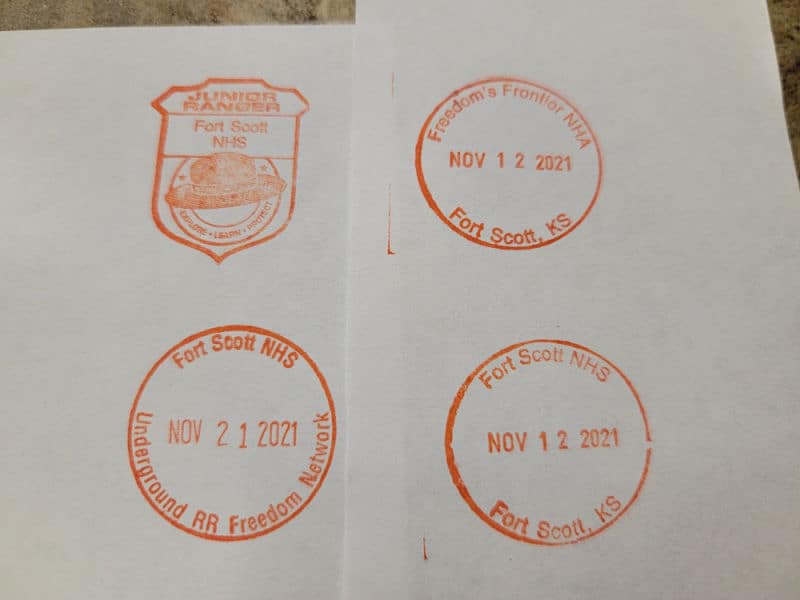
National Park Passport Stamps
National Park Passport stamps can be found in the visitor center.
Fort Scott NHS is part of the 1992 Passport Stamp Set
We found the following National Park Passport stamps during our visit.
- Fort Scott NHS, Fort Scott, KS
- Underground RR Freedom Network
- Freedom's Frontier NHA
- Junior Ranger Stamp
We like to use these circle stickers for park stamps so we don't have to bring our passport book with us on every trip.
The National Park Passport Book program is a great way to document all of the parks you have visitied.
You can get Passport Stickers and Annual Stamp Sets to help enhance your Passport Book.
Electric Vehicle Charging
There are 2 electric vehicle (EV) charging stations within a 10-mile radius of the center of Fort Scott, KS.
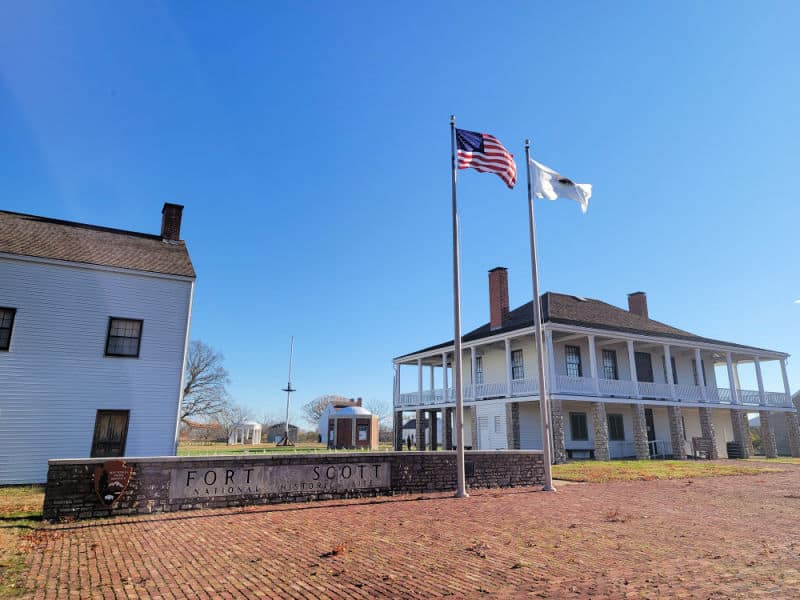
Details about Fort Scott National Historic Site
Size - 17 acres
Check out how the park compares to other National Parks by Size.
Date Established
October 19, 1978
Visitation
In 2021, Fort Scott NHS had 22,894 park visitors.
In 2020, Fort Scott NHS had 14,652 park visitors.
In 2019, Fort Scott NHS had 24,068 park visitors.
Learn more about the most visited and least visited National Parks in the US
National Park Address
1 Old Fort Blvd.
Fort Scott, KS 66701
United States
Fort Scott is about 90 miles south of Kansas City and 60 miles northwest of Joplin, Missouri.
4 miles from the Kansas-Missouri border.
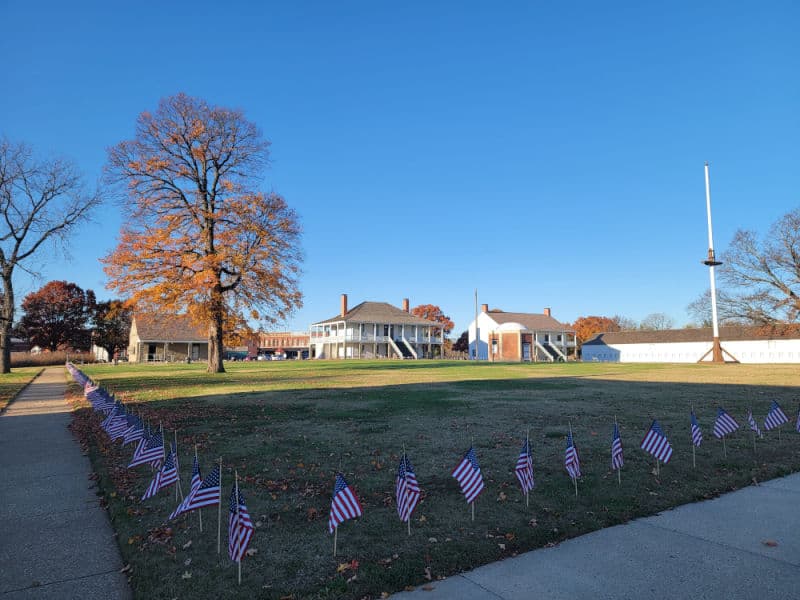
Where is Fort Scott National Historic Site?
Fort Scott National Historic Site is located in downtown Fort Scott, Kansas. U.S. Highways 69 and 54 intersect. Fort Scott is about 90 miles south of Kansas City and 60 miles northwest of Joplin, Missouri.
Estimated distance from major cities nearby
- Kansas City, MO - 100 miles
- Tulsa, OK - 170 miles
- Wichita, KS - 160 miles
- Oklahoma City, OK - 265 miles
- Lincoln, NE - 290 miles
- Omaha, NE - 300 miles
- Saint Louis, MO - 305 miles
- Memphis, TN - 400 miles
- Plano, TX - 410 miles
- Garland, TX - 420 miles
- Austin, TX - 591 miles
Estimated Distance from nearby National Park
Gateway Arch National Park - 297 miles
Hot Springs National Park - 339 mile
Mammoth Cave National Park - 560 miles
Indiana Dunes National Park - 622 miles
Great Sand Dunes National Park - 665 miles
Badlands National Park - 721 miles
Great Smoky Mountains National Park - 737 miles
Where is the National Park Visitor Center?
The Visitor Center for the site is located on the ground floor of the post-hospital which is located at the entrance to the site near Old Fort Blvd.
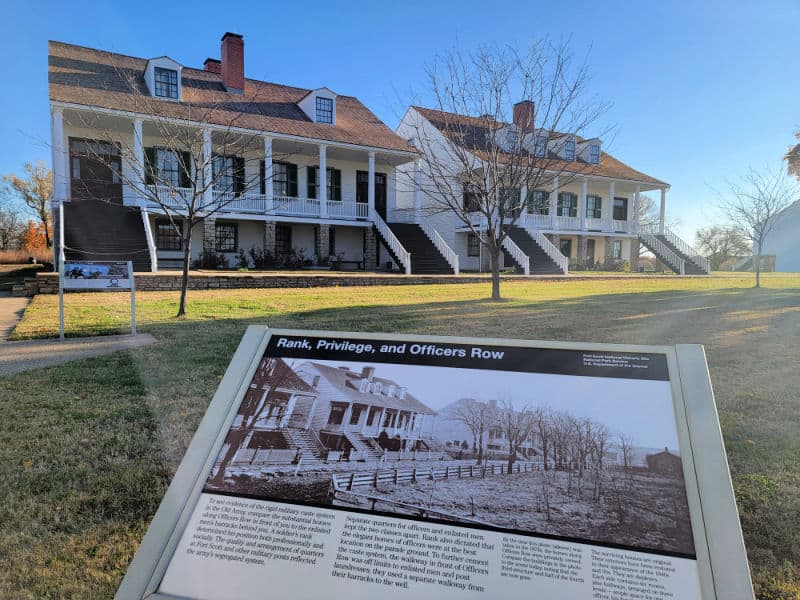
Getting to Fort Scott National Historic Site
Closest Airports
- Joplin Regional Airport (JLN)
International Airports
- Kansas City International Airport (MCI)
- Lambert-St. Louis International Airport (STL)
Regional Airports
- Waynesville-St. Robert Regional Airport (TBN)
- Northwest Arkansas Regional Airport (XNA)
- Manhattan Regional Airport (MHK)
Driving Directions
Fort Scott is about 90 miles south of Kansas City and 60 miles northwest of Joplin, Missouri. It is 4 miles from the Kansas-Missouri border.
Signs directing visitors to Fort Scott are posted on highway 69 for visitors coming from the north and the south and on highway 54 for visitors coming from the east and the west. Highway 69 between Fort Scott and Kansas City is a four lane highway,
The entrance to the site is one block west of the intersection of Highway 69 and Highway 54 east. (Highway 54 west splits off from Highway 69 about ½ mile north of town.)
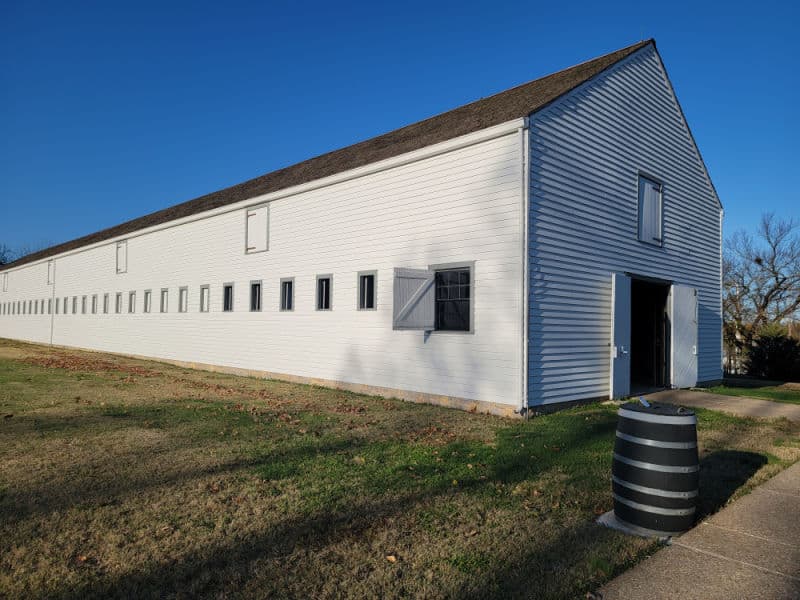
Best time to visit Fort Scott National Historic Site
You may choose to visit during the spring or fall months because the weather is generally mild and pleasant, making it more enjoyable to explore the outdoors and tour the historic buildings. However, the Fort Scott National Historic Site is open year-round so it's worth considering a visit during other seasons as well.
Weather and Seasons
The warmest weather is from June 2nd to September 17th, with an average daily high temperature above 81 degrees.
The coldest weather is from November 27th to February 24th, with an average daily high temperature below 53 degrees.
The snowiest weather usually occurs between November 22nd to March 10th, with an average snowfall of at least 1 inch a month. January gets the most snow with an average of 2.7 inches.
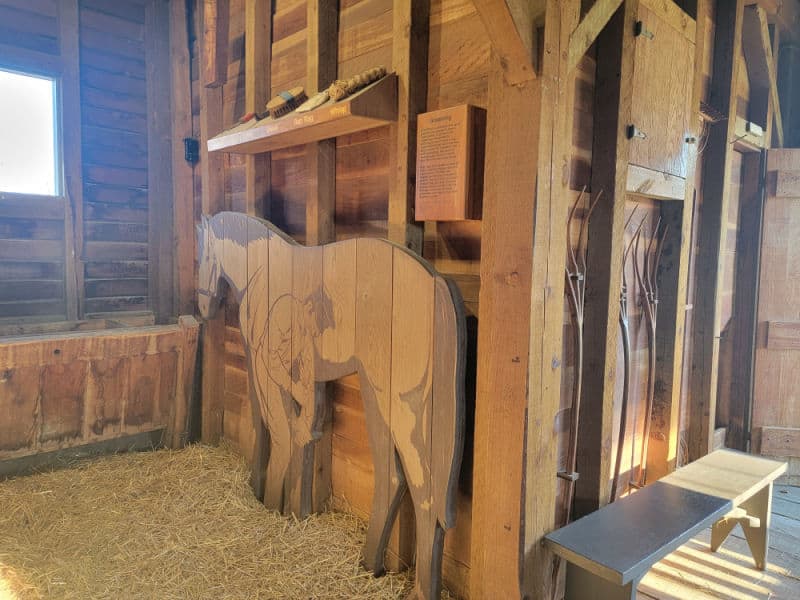
Best Things to do in Fort Scott National Historic Site
We suggest planning a few hours to explore the park and walk the fort grounds. There are quite a few buildings you can explore along with a great Junior Ranger program.
Visitor Center
The visitor center is located in the historic Post Hotel on the fort.
There is an information desk, small store, and an area with the National Park Passport stamps.
You can also pick up and turn in your Junior Ranger program at the visitor center.
Visitor Center hours: April 1 to October 31, 8:00 a.m.-5:00 p.m.
November 1 to March 31 8:30 a.m.-4:30 p.m.
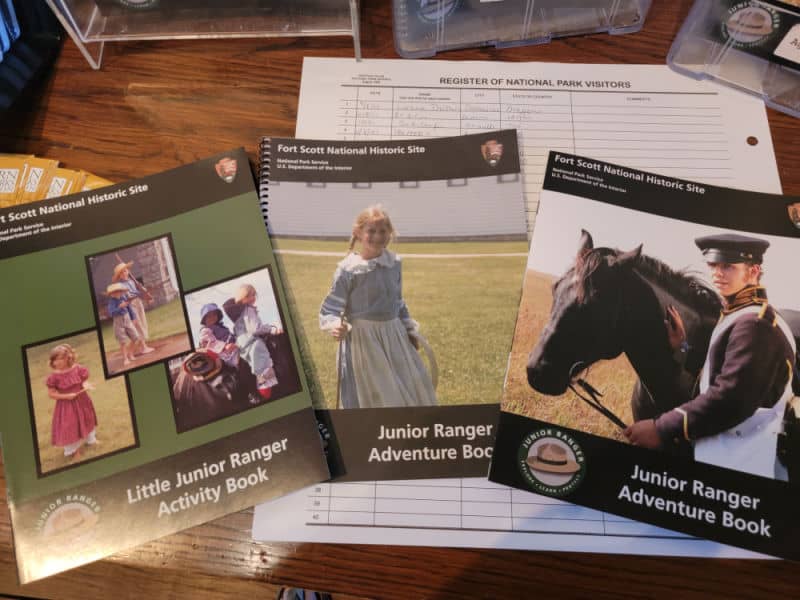
Junior Ranger Program
Fort Scott has three different Junior Ranger booklets. One for preschool children (ages 3-5), one for younger elementary age children (ages 5-7), and one for older children (ages 8 and above).
Make sure to pick up the Junior Ranger programs before you tour the grounds. Most of the questions need to be answered in specific buildings.
If you pick it up after visiting the grounds you may need to go back and re-visit buildings to find the answers.
We walked around the park before the visitor center opened and then had to revisit a few buildings to fill out the junior ranger program.
The visitor center will check your answers and make sure that you found all of the information you needed.
Guided Tours
Daily Park Ranger guided tours leave from the Visitor Center at 10 am and 1 pm from May through September.
Other times of the year the guided tours depend on staffing.
Historic Buildings
Eleven historic buildings containing 30 historically furnished rooms are open to the public for self-guided tours.
Park Movie
Fort Scott's movie Dreams and Dilemmas: Fort Scott and the Growth of a Nation can be viewed online prior to your visit.
You can find the park video here.
Hiking
Always carry the 10 essentials for outdoor survival when exploring.
There are no specific hiking trails in the park. Visitors can wander the parade grounds and explore 20 historic structures.
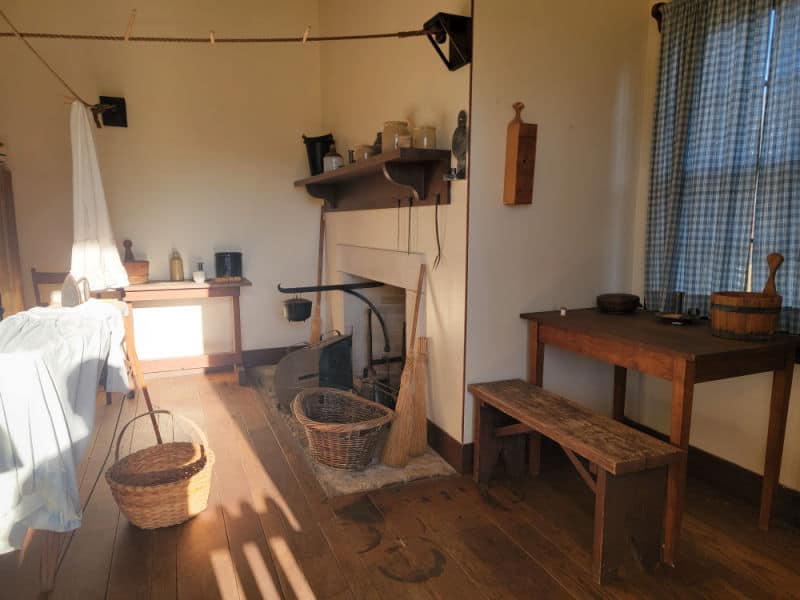
How to beat the crowds
We did not experience any crowds while visiting the park.
Where to stay when visiting Fort Scott
There are no National Park Lodges within the park
There is no lodging in the park but there are motels and bed and breakfast establishments in and around the town of Fort Scott.
The Courtland Hotel and Day Spa - Look forward to a coffee shop/café, a library, and dry cleaning/laundry services. Indulge in a manicure/pedicure, a body scrub, and a sports massage at Day Spa Salon, the onsite spa. Be sure to enjoy a meal at any of the 6 onsite restaurants. In addition to 3 bars and a conference center, guests can connect to free in-room Wi-Fi.
Sleep Inn & Suites Fort Scott - take advantage of a terrace, laundry facilities, and a 24-hour gym. In addition to a 24-hour business center, guests can connect to free in-room Wi-Fi.
Fort Scott Inn - free full breakfast, laundry facilities, and a bar. For some rest and relaxation, visit the sauna or the hot tub. Free in-room Wi-Fi is available to all guests, along with a gym and a business center.
Budgetel Inn and Suites - free English breakfast and laundry facilities. Guests can connect to free in-room Wi-Fi.
Travelodge by Wyndham Fort Scott - A coffee shop/café, laundry facilities, and a restaurant are just a few of the amenities provided at Travelodge by Wyndham Fort Scott. Guests can connect to free in-room Wi-Fi.
Click on the map below for additional vacation rentals and lodging in Fort Scott, Kansas
Camping
There is no overnight camping or parking on the grounds

For a fun adventure check out Escape Campervans. These campervans have built in beds, kitchen area with refrigerators, and more. You can have them fully set up with kitchen supplies, bedding, and other fun extras. They are painted with epic designs you can't miss!
Escape Campervans has offices in Vancouver, Seattle, Portland, San Francisco, Las Vegas, Los Angeles, Phoenix, Salt Lake City, Denver, New York, and Orlando
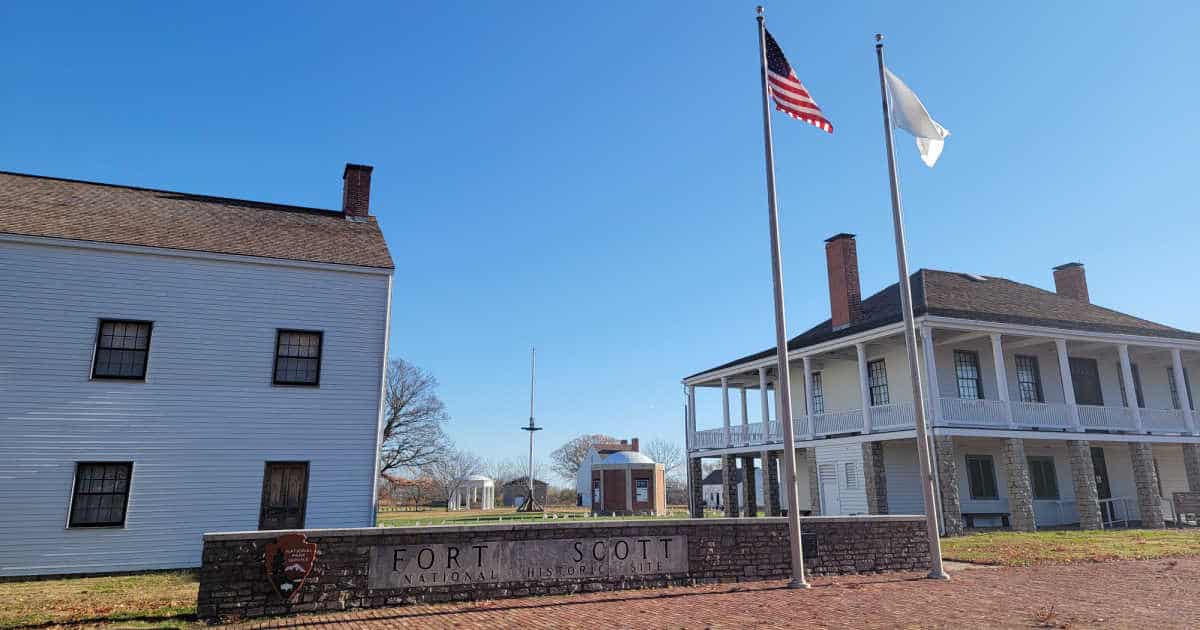
Parks Near Fort Scott National Historic Site
George Washington Carver National Monument - 84 miles
Wilson's Creek National Battlefield - 133 miles
Harry S Truman National Historic Site - 100 miles
Brown V Board Of Education National Historic Site - 143 miles
Tallgrass Prairie National Preserve - 147 miles
Pea Ridge National Military Park - 133 miles
Check out all of the Kansas National Parks along with neighboring Nebraska National Parks, Missouri National Parks, Oklahoma National Parks, and National Parks in Colorado.
Check out all of the US National Historic Sites
Make sure to follow Park Ranger John on Facebook, Instagram, Pinterest, and TikTok





Leave a Reply